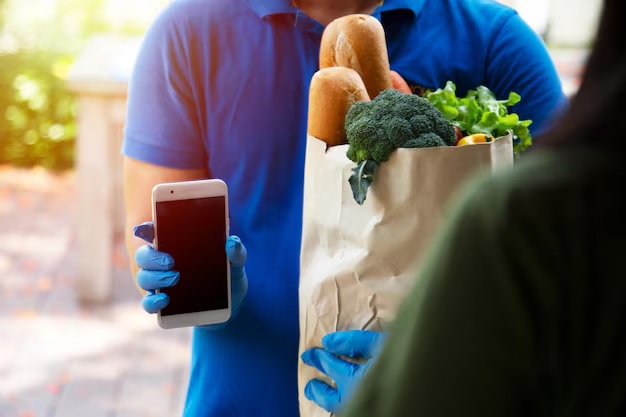The way Indian consumers purchase their necessities has changed due to quick commerce. Nowadays, q-commerce can deliver to your door in as little as 10 to 30 minutes, whereas grocery e-commerce used to guarantee delivery in a day or two. It shows how planned purchases are giving way to convenience-driven and instant-gratification purchasing.
Q-commerce is thriving in India thanks to the country’s urban lifestyle, growing digital adoption, and speed demands. Using data-driven logistics, hyper-local delivery networks, and micro-warehouses, major players like Blinkit, Zepto, and Swiggy Instamart are revolutionising online grocery shopping.
This is more of a change in consumer expectations than a change in technology, which is causing traditional grocery e-commerce platforms to reconsider supply chain models and timelines.
Why Q-Commerce Is Booming So Fast
Time has become as big a factor in Indian consumers’ minds as money is. Busy professionals, nuclear families, and students seek rapid delivery for forgotten essentials, last-minute needs, or impulse buys.
The model thrives on:
- Hyperlocal dark stores
- Real-time inventory visibility
- They also provide dense delivery networks
- Predictive analytics for demand planning
Unlike the earlier grocery e-commerce players reliant on large warehouses and long delivery routes, q-commerce depends on much smaller, strategically-located storage units that house high-demand items.
Changing Consumer Behaviour
Q-commerce has actually blurred the line between online shopping and offline convenience. Where customers once visited neighbourhood shops for quick buys, they now rely on mobile apps.
This shift is accelerated by
- Confidence in digital payments
- Regular cash back programs and special discounts.
- Improved customer experience
- Ease of reordering essentials
The Role of Technology and Data
Behind every “delivery in 10 minutes” promise is an underpinning tech and logistics framework. Be it real-time updates, stock synchronisation, or e-commerce tracking systems, assuring a seamless flow of orders.
E-commerce tracking helps the platform monitor order flow, delivery times, stockouts, and rider availability
More importantly, it forecasts what customers in particular areas will order, hence minimizing waste and enhancing efficiency. As a result, the tools analyzing digital shelves, pricing, and competition are becoming increasingly central to strategy.
Challenges Faced by Q-Commerce Players
Of course, Q-commerce isn’t all smooth sailing either. Some of the challenges faced are:
- Profitability pressures: ultra-fast delivery and low margins make financial sustainability hard.
- Operational complexity: Managing hundreds of SKUs across micro-warehouses is demanding.
- Last-mile costs: the faster the delivery, the higher the cost.
- Inventory limitations: Not all merchandise will be able to fit within a small-format dark store.
Yet, retailers are pushing forward with curated catalogues and AI-driven stocking decisions.
How Traditional Grocery E-Commerce Is Responding
In a way, the grocery e-commerce sector has not vanished but instead changed and evolved. Many sites have introduced express delivery slots in collaboration with delivery networks.
Some are combining Q-commerce speed with a wider catalogue, while others are building hybrid models—planned orders for bulk items and instant delivery for daily needs.
The result is a more dynamic, multi-layered market that caters to a range of shopping behaviours.
Paxcom’s place in an ecosystem of rapid delivery
As Q-commerce scales, brands require visibility into how they perform across platforms, and this is where digital shelf analytics becomes important. Paxcom offers solutions that help brands understand their online presence across grocery e-commerce channels.
With Kinator, the digital shelf analytics tool by Paxcom, brands are able to track product availability, pricing, keyword performance, and visibility across rapid delivery platforms.
It provides insights that help them to restock quantities, improve product discoverability, and respond better to the competition. Rather than working in the dark, they base their decisions on data optimization for e-commerce tracking, shelf placement, and customer-facing activity.
What’s in store for Q-commerce in India
In India, q-commerce is still developing and could be followed by the
- Delivery of recurrent necessities via subscription
- Connectivity with Internet of Things devices and smart kitchens
- Robotics-based automation for dark stores
- Collaborations on exclusive SKUs with FMCG companies
Regulatory frameworks pertaining to data use and labour protection may also have an impact on growth.
However, it is evident that Q-commerce is not a passing fad. It will become a fundamental aspect of the grocery and retail e-commerce scene in India.
Conclusion
Q-commerce marks a definitive shift in how Indian consumers look at convenience, speed, and online shopping. Grocery e-commerce has to be instant, reliable, and data-driven. Those who invest in intelligent logistics, strong digital shelf visibility, and effective e-commerce tracking stay ahead. Equipped with analytics tools like Kinator, brands bank on agility to adapt to the new era of rapid delivery. Q-commerce is not only the future, but it’s already reshaping the present.

